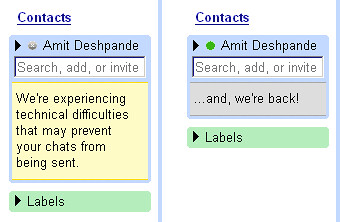
User profiles have played an important role in shaping products and deciding about features, navigation and how interaction occurs in the system.
Now, What are User Profiles?Okay, a User Profile (also called a Persona) is a fictional user for your product. They can be created by identifying and categorizing your user audience. You will have to create a realistic user profile for each of them (make them real, with names, headshot snaps and characteristics).
Why do we need User Profiles?Answering a simple question should put you on the right track:
“Do you know what your users need?”
If the answer is yes, you already know who your users are – at least you have a fuzzy idea who they are. Is your user present in the average middle-class family? Is there an age-group that he fits in?
Well, if you still thought you knew your user well, try asking yourself if he is computer illiterate or tech-savvy. What is it that he likes about your product? Is it ease-of-use, or the feature-richness?
Creating User Profiles helps understand how your average user or customer thinks like. It helps peep into user motivations, needs and goals. So the next time, if you made the finance management product simpler to use, you know that Mr. Roberts (the CEO who wants 48 hours in a day, and always on the run) is going to love you for it.
More is merrier – Get in more profilersCreating a User profile is a more-than-one-man job. The reason is that when one sets out to create a User Profile it tends to be more or less a replica of his own. When a team works on creating a User Profile, the User Profile will align lesser and lesser to any one individual in the team.
There’s also another reason to this. We need more people who are working on the product to be involved so that they agree (either by compromise or in acceptance) to the defined User Profiles. When creating user profiles two types of groups will come together – those who know about the user and those who don’t. Sales guys, the marketing teams, business strategists and support people are the people who can think like the average user. Then engineering folks, Information architects, Interaction Designers, Usability team, Color psychologists, Visual and Interface designers constitute the group that needs to know about the user.
The idea is simple. The interaction designer would want the user to use the feature X with ease, minimum dialogue and reduced ambiguity. He may miss out to understand if the feature X is really important to the user or not. The Interface designer believes that the user will like the drop-down menu’s cool effects (huh?), but may fail to see that it is actually a hindrance for a user who wants things to be done faster.
When everybody comes together to create a User profile, it turns out to be a richly defined profile, and also eliminates any preconceptions that a particular production segment may have.
Steps to create a User ProfileNow when you know the importance of User profiles, you definitely would want to know how to create them. The following steps will tell you just that.
1. Take samples of your user population. Pick up samples or representatives of cross-sections from your user community.
2. Narrow the range of Profiles. Zero in on 3-4 users which are averages from the respective selected samples.
3. Define them more accurately. Add names, find stock photographs, describe the User Profile – define physical, mental and emotional attributes. Add some life to the personas – their lifestyle, their age, family situation, home life, income, pets, job, hobbies and interests. Get into their shoes and think. What are their favorite things (products) and what do they hate? Be creative but realistic.
4. Define the Profile Goals. The most important element of the persona or User profile - the motivating goals and the goals for using the product. Think about the different types of goals:
• Experience goals - how does the User feel when he uses the product – not stupid, confident, excited, happy, “I-am-an-expert”
• End goals – the achievement factor - productivity, economy, benefits over conventional systems, efficiency, better quality, happiness, solutions
• Business goals – how does it affect business goals - profitability, market share, competitive edge, security, growth
• Practical goals – outcome as seen as a regular pattern - Avoided problems, met clients’ requirements, found a solution
Hope that helps you understand John, Judy and Mr. Roberts better!
Related:
Notes on Design Practice, Stories and Prototypes Perfecting your Personas




